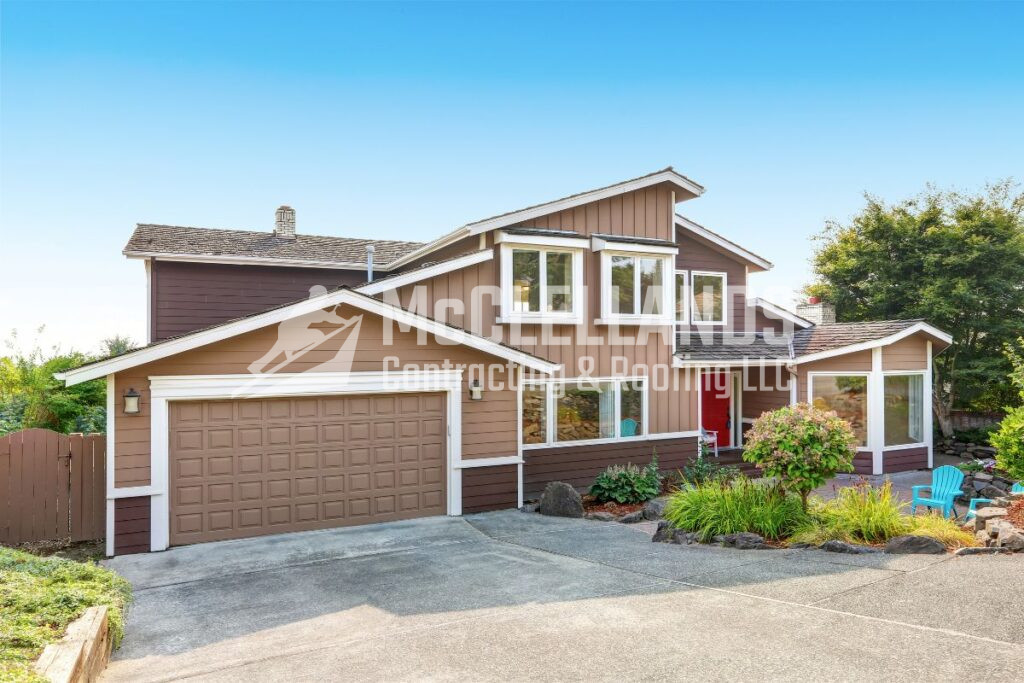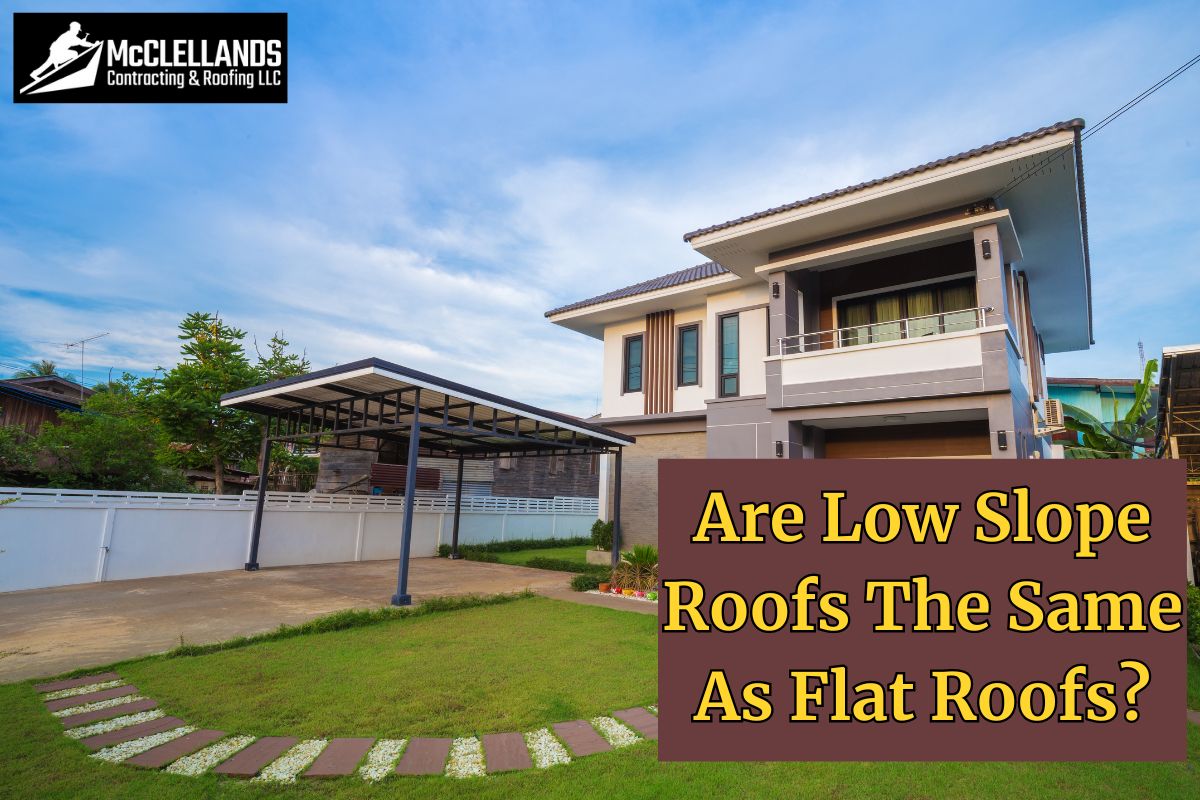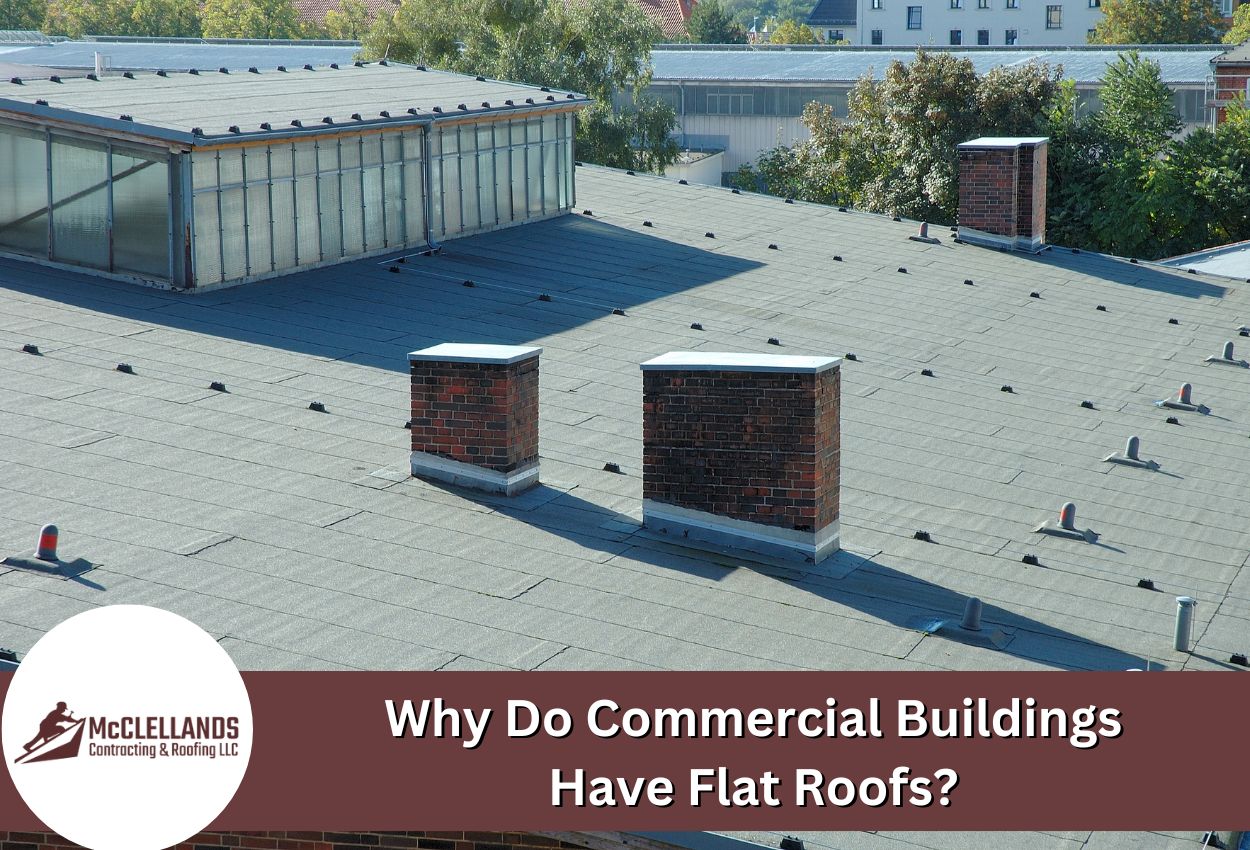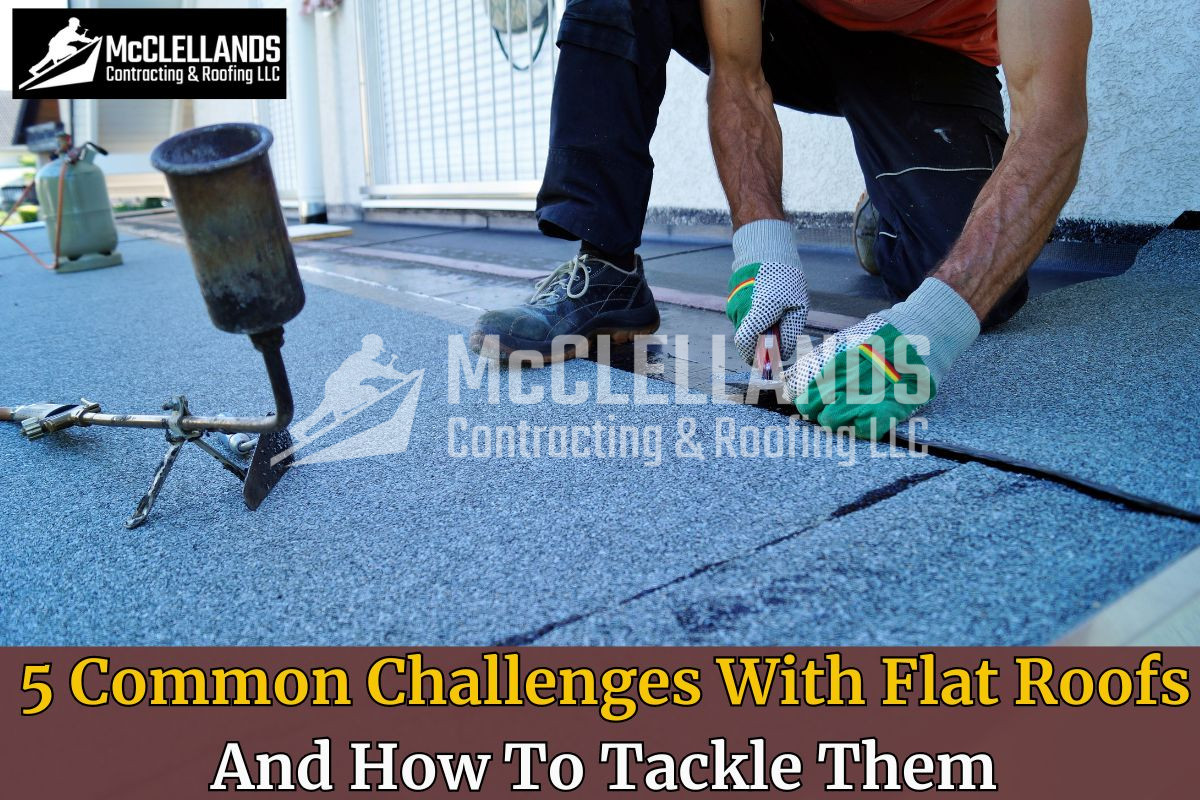Do you want to replace your home’s roof or install a new roof on your space? Then it’s a good idea to learn all about your options. If you are looking at flat or low slope roofing, this blog post should be a helpful resource for you.
At McClellands Contracting and Roofing, we’re here to explain whether low slope roofs are the same as flat roofs. We’ll get into the facts so that you can select the right roofing system for your home.
Let’s get started!
Low Slope Roofs Are Not The Same As Flat Roofs
Low slope roofs and flat roofs share similarities as they both have a minimal angle, but they differ in a few important ways. If you want to install a new roof or replace your old roof, you must understand the difference between flat and low sloped roofs to choose the right option.
👉 A low slope roof has a gentle incline, typically ranging from 1:12 to 4:12, meaning there is a slight rise for every 12 inches of horizontal distance. These roofs are designed to ensure water drains properly, though not as quickly as steeper roofs.
👉 As for flat roofs, they have almost no slope, which is often less than 1:12. Despite being called flat, they have a slight slope for drainage purposes. So, why are they still named flat? Because the slope is not very noticeable.
Let’s explore these two roofing options in depth.
Understanding Low Slope Roofs

Low slope roofs have a slight pitch. This design adds a unique architectural touch to buildings and allows water to flow off effectively. Property owners have a wide choice of materials for low slope roofs, ranging from rubber membranes to metal panels.
Benefits of Low Slope Roofs
Let’s explore the advantages of a low slope roof:
Beautiful Choice
If you are looking for a roof that can turn heads, a low angled roof can do that for you. Choose EPDM or TPO for classic aesthetics or go for a standing seam metal roof to give a modern, minimalist look to your home. Make sure the design suits the existing architectural style of your home.
Improved Snow Shedding
In areas with heavy snowfall, low slope roofs can shed snow more effectively than flat roofs. The slight incline helps prevent snow accumulation, reducing the weight on the roof and minimizing the risk of structural damage or collapse.
Reduced Risk of Ponding Water
While flat roofs are prone to water accumulation, low slope roofs are less susceptible to this issue due to their improved drainage capabilities. This reduces the risk of water damage and structural deterioration to your home.
Higher Durability
In areas with extreme weather conditions, an angled roof can last longer than a flat roof. With sturdy materials and correct installation, a low slope roof can protect your home from wind, water, and snow damage for a longer period of time.
Situations Where Low Slope Roofs Are Better Than Flat Roofs
Low angled roofing systems are perfect for homes in cold climates and areas with heavy rainfall. These roofs are ideal for single-family homes and condos due to their versatility and aesthetic appeal. If you want to extend your home, build a shed, or replace the garage roof, it’s more beneficial to have a roof with a slight slope.
Understanding Flat Roofing Systems
Flat roofs can give your home a modern look with their leveled surface. Homeowners have a wide choice of materials for flat roofs, including built-up roofing, single-ply membranes, and metal panels, allowing for customization based on durability and design preferences. Flat roofs offer attractive benefits for homeowners who want a modern, functional, and versatile roofing system.

Benefits of Flat Roofs For Homeowners
Here's a look at the advantages of flat roofs:
Modern, Minimalist Architecture
Flat roofs are common in modern architecture, where homes have reflective, sharp, and clean exteriors, made from materials like glass, metal, fiber cement, and fiberglass, among others. Flat roofs can make a home look more futuristic with smart details and sturdy materials.
Easy Maintenance
Flat roofs are generally easier to access and maintain compared to pitched roofs, as there is no steep incline or complicated structure to navigate. Regular roof maintenance tasks such as cleaning gutters, occasional inspections, and applying protective coatings can be performed more safely and efficiently on a flat surface.
Wind Resistance
Flat roofs are naturally more aerodynamic than pitched roofs, offering better resistance to wind uplifts during storms. Properly anchored and attached flat roofs can withstand high wind speeds and turbulent weather conditions, minimizing the risk of damage and detachment.
Functional Design
Flat roofs present a versatile design choice that can adapt to various functional requirements. They provide abundant space for HVAC equipment, water tanks, and other items, keeping them out of sight for a seamless look. Moreover, you can customize a flat roof with entryways or walkways for easier maintenance and service access.
Cost Effective
If you select a flat roofing system with a rubber-based membrane, like EPDM, it’s a more economical option. Top grade manufacturers provide high quality flat roofing products that can last for over 30 years and come with multiple benefits like energy saving, impact resistance, and wind protection.
When Flat Roofs Are Better Than Low Slope Roofs
Flat roofs are perfect for homes in warmer or moderate climates. This roofing style is ideal for homeowners who need additional usable space to install HVAC units and solar panels. The surface of a flat roof is perfect for homeowners who want to set up a green rooftop area or want to access the roof more often. Flat roofs can be used as additional living space, whether for functional or leisure activities. You just need to choose suitable and good quality materials to accommodate your usage.
Flat and low slope roofing styles have their unique pros and cons. It’s crucial to make a choice after carefully aligning their features with your local climate and personal requirements.
In this blog post, you’ve learned about the differences, benefits, and uses of flat and low slope roofs. However, it’s also important to understand the problems associated with these two roofing designs. For more information, you can read our previous blog post: 5 Common Challenges with Flat Roofs In Pittsburgh and How to Tackle Them
If you want more information on this topic, advice on residential roofing, or a reliable roof installation service in Pittsburgh, PA, you can trust the local experts at McClellands Contracting and Roofing.
Get The Best Roofing System For Your Home In Pittsburgh, PA!
At McClellands Contracting and Roofing, we specialize in installing flat and low slope roofs on homes. Our talented experts work with multiple roofing materials, from shingles and shakes to metal and tile. As local contractors, we do our best to help our fellow homeowners get the best roofing system for their properties. If you want to install a new roof, we are to provide a free roofing consultation and reliable roof installation services in Pittsburgh. You can trust McClellands Contracting and Roofing to deliver 100% successful results within your budget! Call us at (412) 353-5660 to schedule a free consultation with our team.




